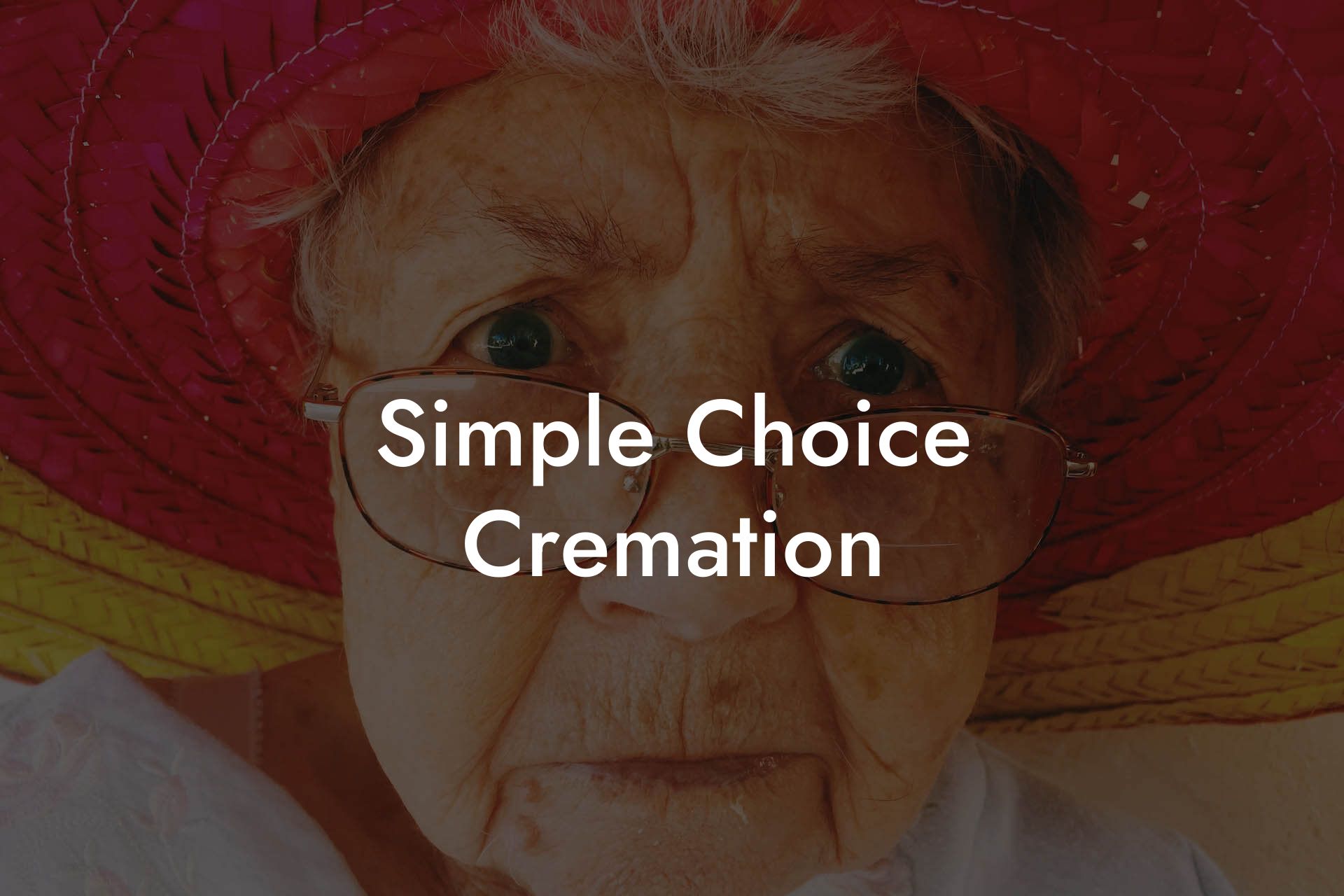Imagine having a simple, affordable, and eco-friendly way to say goodbye to your loved one. Welcome to the world of Simple Choice Cremation, where we believe that honoring your loved one shouldn't break the bank or harm the planet. In this comprehensive guide, we'll walk you through the benefits, process, and options of cremation, empowering you to make informed decisions during a difficult time.
Quick Links to Useful Sections
- What is Cremation, and Why is it Becoming So Popular?
- The Benefits of Cremation: A Simple, Affordable, and Eco-Friendly Choice
- The Cremation Process: A Step-by-Step Guide
- Cremation Options: Choosing the Right Memorialization for Your Loved One
- Frequently Asked Questions About Cremation
- Resources and Community Support: Your Next Steps
What is Cremation, and Why is it Becoming So Popular?
Cremation is a dignified and environmentally friendly alternative to traditional burial. It involves the use of high-temperature flames to reduce a deceased person's body to its basic elements, resulting in a container of ashes, or cremated remains. With cremation, you can choose from various memorialization options, from scattering the ashes in a special location to keeping them in an urn or burial plot.
The popularity of cremation is growing rapidly, with over 50% of Americans opting for it in 2020. This trend is driven by factors such as cost, environmental concerns, and the desire for a more personalized farewell.
The Benefits of Cremation: A Simple, Affordable, and Eco-Friendly Choice
Cremation offers several advantages over traditional burial, including:
- Cost-effectiveness: Cremation can be up to 50% less expensive than traditional burial, making it a more accessible option for many families.
- Environmental benefits: Cremation requires minimal land use, reduces carbon emissions, and eliminates the need for embalming chemicals.
- Flexibility: With cremation, you can choose from various memorialization options, allowing you to personalize the farewell process.
- Simplicity: Cremation streamlines the funeral process, reducing the complexity and stress associated with traditional burial arrangements.
The Cremation Process: A Step-by-Step Guide
While the thought of cremation might seem overwhelming, the process is relatively straightforward. Here's an overview of what to expect:
- Initial arrangements: Contact a cremation provider or funeral home to discuss your options and make arrangements.
- Transportation: The deceased is transported to the cremation facility.
- Preparation: The body is prepared for cremation, which may include washing, dressing, and placing it in a cremation container.
- Cremation: The body is cremated using high-temperature flames, resulting in a container of ashes.
- Return of ashes: The cremated remains are returned to you, usually within a few days.
Cremation Options: Choosing the Right Memorialization for Your Loved One
With cremation, you have numerous options for memorializing your loved one. Some popular choices include:
- Urn burial: Burying the ashes in a cemetery or memorial garden.
- Scattering: Releasing the ashes in a special location, such as a park, ocean, or mountain.
- Home storage: Keeping the ashes in an urn or container at home.
- Tree planting: Planting a tree or flowers using the ashes as fertilizer.
Frequently Asked Questions About Cremation
Here are some common questions and answers about cremation:
1. Is cremation a safe process?
Yes, cremation is a safe and regulated process, with strict guidelines in place to ensure the dignity and respect of the deceased.
2. Can I still have a funeral or memorial service with cremation?
Absolutely. You can hold a funeral or memorial service before or after the cremation process, allowing you to honor your loved one in a meaningful way.
3. How do I know I'm getting the right ashes back?
Reputable cremation providers use identification systems to ensure that the ashes returned to you are those of your loved one.
4. Can I divide the ashes among family members?
Yes, you can divide the ashes among family members or friends, allowing multiple people to keep a portion of the cremated remains.
Resources and Community Support: Your Next Steps
Losing a loved one can be a difficult and overwhelming experience. Here are some resources and support options to help you navigate the grieving process:
- Grief counseling: Reach out to a professional counselor or therapist who can provide guidance and support.
- Support groups: Join a local support group or online community to connect with others who have experienced a similar loss.
- Online resources: Utilize online resources, such as bereavement websites and forums, to access information and connect with others.

